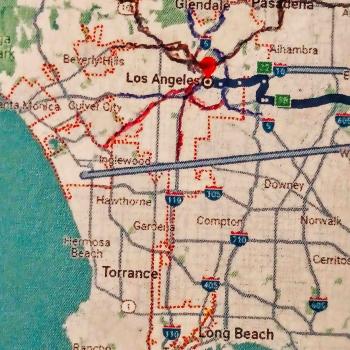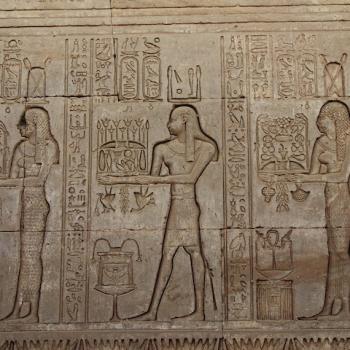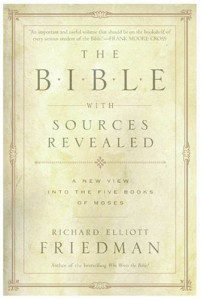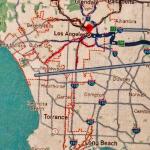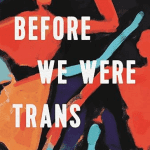The four main original independent sources used to compile the early books of the Bible are called J, E, D, and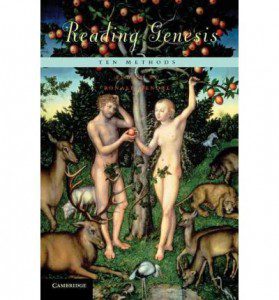 P. Similar to the “Q Source” used to compose the Gospels of Matthew and Luke, J-E-D-P are each shorthand for the full title scholars have given to these sources. The Book of J, which stands for the “Jahwist.” Normally, we English-speakers would begin spelling YaHWeH with a “Y,” but the landmark scholars who developed this “Documentary Hypothesis” were Germans. I particularly recommend the work of Richard Elliott Friedman as an accessible entry point into the source behind the Hebrew Bible.
P. Similar to the “Q Source” used to compose the Gospels of Matthew and Luke, J-E-D-P are each shorthand for the full title scholars have given to these sources. The Book of J, which stands for the “Jahwist.” Normally, we English-speakers would begin spelling YaHWeH with a “Y,” but the landmark scholars who developed this “Documentary Hypothesis” were Germans. I particularly recommend the work of Richard Elliott Friedman as an accessible entry point into the source behind the Hebrew Bible.
The past few months, I’ve been preaching through the “J Source” in Genesis. The following is a brief description of the sermon in this series:
“The Book of J”: Are There Hidden Books in the Bible? (Genesis 2). Description: Many scholars think that there are “hidden” books in the Bible: the books used as source material to compile the final version of the biblical books with which we are familiar. http://www.patheos.com/blogs/carlgregg/2012/04/preaching-%E2%80%9Cthe-book-of-j%E2%80%9D-are-there-hidden-books-in-the-bible/.
“Paradise Lost or Outgrown? Genesis 3, Original Blessing, and Original Responsibility” (Genesis 3). Description: Genesis 3 is a deeply true universal story about the human condition, even though this precise series of events never happened historically. It’s a story about growing up, becoming aware of good and evil, and learning that our actions have consequences. It’s a tale about that instant when the veil of childhood innocence drops away for the first time and we realize our mortality; it’s about that moment in time when we realize that we too are someday going to die. This metaphorical, mythological, and archetypal way of reading the Bible’s earliest chapters is so much more exciting and compelling than more literal approaches. It also makes much more sense than asking question like, “Did Adam have a belly button? or “Where did Mrs. Cain come from?” http://www.patheos.com/blogs/carlgregg/2012/04/paradise-lost-or-outgrown-genesis-3-original-blessing-and-original-responsibility
“Before and After: Cain, Abel, and Archetypes” (Genesis 4). Description: In our postmodern times, there is much to be regained in reclaiming some premodern reading strategies: allowing ourselves to say both “Yes, many of these story are more mythological than historical” and “Yes, many of these stories still have significant meaning on the level of myth and metaphor, allegory and archetype, symbol and sacrament. From this angle, the story of Cain and Abel becomes the universally true story of the farmer “killing” the lifestyle of the semi-nomadic herder and moving to the city. God’s rejection of the fruit of Cain’s farm and Cain being cast out from the plains east to Eden into the city reveals that the authors and promoters of this biblical myth had an anti-city bias and were far from convinced that the move toward urbanization was “progress.” They saw many dangers in city life, and we were see a similar anti-urban bias in future texts, especially regarding the Towel of Babel. http://www.patheos.com/blogs/carlgregg/2012/05/before-and-after-cain-abel-and-archetypes/
“Noah’s Flood: Climate Change Then & Now” (Genesis 6-7). Description: Perhaps the most salient parallel for the early twenty-first century is that Climate Change seems to be causing a melting of Arctic sea ice, resulting in a rise of flood waters, potentially not unlike those ancient floods of Noah or Gilgamesh, which were “caused,” at least according to the mythological accounts, by human behavior. Talking about Climate Change is appropriate on Mother’s Day, which at its best honors and celebrates the blood, sweat, and tears put in to creating both new life and a better, more life-giving world for future generations. http://www.patheos.com/blogs/carlgregg/2012/05/noah%E2%80%99s-flood-climate-change-then-now/
“Slavery, Same-Sex Marriage, and How to Read the Bible” (Genesis 9). Description: From slavery to same-sex marriage, it really matter what stories we tell, when we tell them, and how we interpret them. We must learn to interpret scripture freely, responsibly, creativity, and compassionately — not only for the benefit of ourselves and our tribe, but for the benefit all people and the whole of creation. http://www.patheos.com/blogs/carlgregg/2012/05/slavery-same-sex-marriage-and-how-to-read-the-bible/
“What Troubles Your Thoughts?” (Genesis 11). Description: Humanity has a noble technological heritage to claim, but both the Prometheus and Tower of Babel myths remind us that technology is a two-edged sword that often has unintended consequences. The atomic bomb and nuclear energy are perhaps the most powerful examples we have today of the ways that the same technology can be used to enhance or destroy life. Wrestling with the unintended consequences of technology, Wendell Berry has written, “I knew a man who, in the age of chainsaws, went right on cutting his wood with a handsaw and an axe. He was a healthier and saner man than I am. I shall let his memory trouble my thoughts.” What parts of our culture so-called “technological progress” troubles your thoughts. Where do you see alternative paths to healthier, saner, and more sustainable ways of life? http://www.patheos.com/blogs/carlgregg/2012/06/what-troubles-your-thoughts
“Lech lecha”: The Journey Outward and Inward (Genesis 12). Featuring a poem by my lovely and talented wife Magin LaSov Gregg. http://www.patheos.com/blogs/carlgregg/2012/06/%E2%80%9Clech-lecha%E2%80%9D-the-journey-outward-inward-genesis-12.
The Rev. Dr. Carl Gregg is a trained spiritual director, a D.Min. graduate of San Francisco Theological Seminary, and the pastor of Broadview Church in Chesapeake Beach, Maryland. On July 9, 2012, he will start as the Minister of the Unitarian Universalist Congregation of Frederick, Maryland. Follow him on Facebook (facebook.com/carlgregg) and Twitter (@carlgregg).





